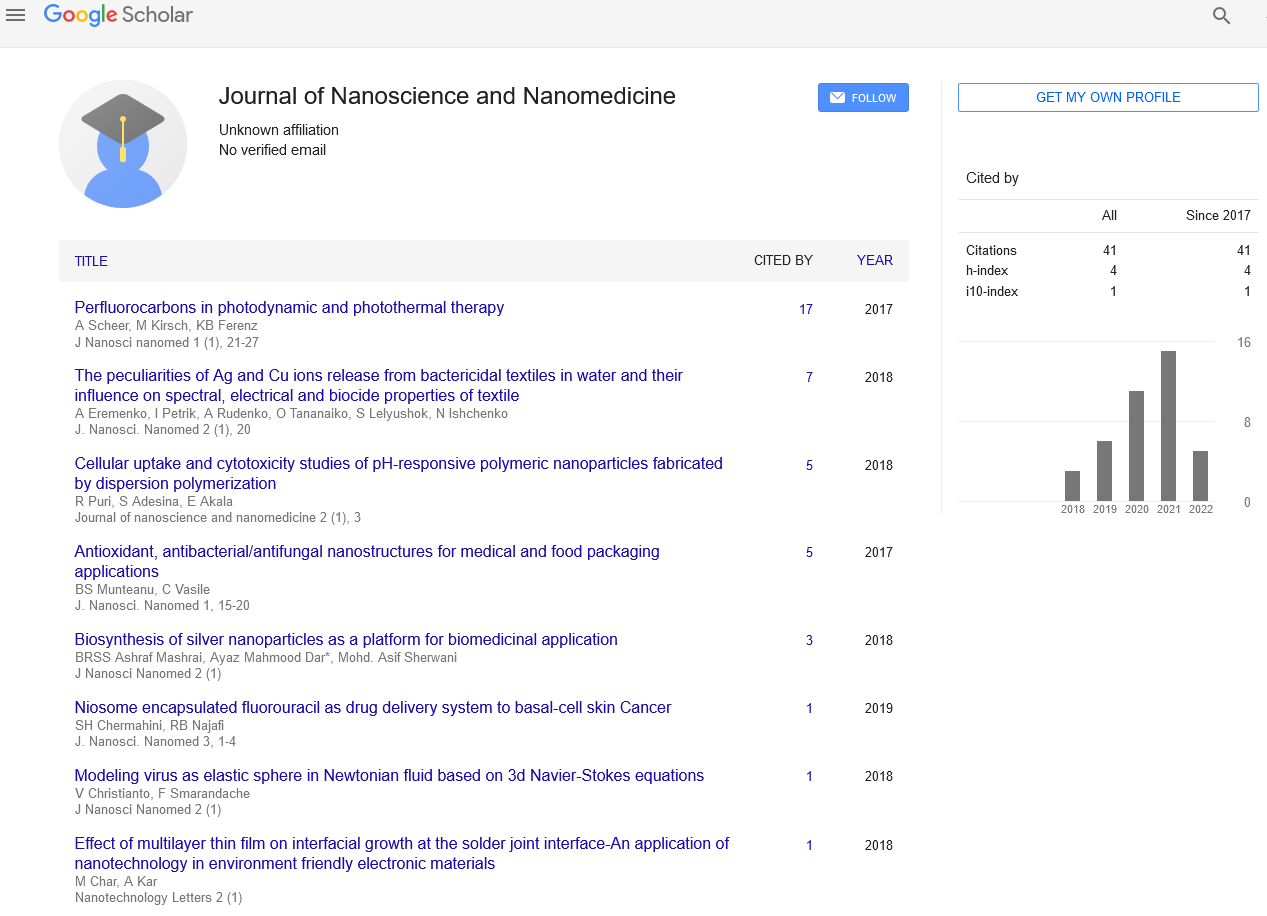Electric Discharge assisted Mechanical Processing
Department of Chemistry, University of Wisconsin-Madison, Madison, Wisconsin
, USA, Email: cheriekonstantatos@yahoo.comReceived: 03-Jul-2021 Accepted Date: Jul 15, 2021; Published: 23-Jul-2021
Citation: Konstantatos C. Electric Discharge assisted Mechanical Processing. J Nanosci Nanomed 2021;5(4):3.
This open-access article is distributed under the terms of the Creative Commons Attribution Non-Commercial License (CC BY-NC) (http://creativecommons.org/licenses/by-nc/4.0/), which permits reuse, distribution and reproduction of the article, provided that the original work is properly cited and the reuse is restricted to noncommercial purposes. For commercial reuse, contact reprints@pulsus.com
Abstract
An electric release is the discharge and transmission of power in a connected electric field through a medium such as a gas. Mechanical processing is utilized to alter the properties of silver powders, counting crumbling of molecule totals, molecule shape, and molecule surface characteristics. This prepare can be utilized for most sorts of silver powders with procedures such as ball processing, vibratory processing, or whittling down processing. The properties and impacts of electric releases are valuable over a wide run of sizes.
Keywords
Mechanical processing, Electric release, Silver powders, Vibratory processing.
INTRODUCTION
Minor beats of current are utilized to distinguish ionizing radiation in a Geiger–Müller tube. A moo relentless current can be utilized to demonstrate the range of gasses in a gas-filled tube. A neon light is an case of a gas-discharge light, valuable both for light and as a voltage controller. A flashtube creates a brief beat of seriously light valuable for photography by sending a overwhelming current through a gas bend release.
Crown releases are utilized in photocopiers. Electric releases can pass on significant vitality to the terminals at the closes of the release. A start hole is utilized in inside combustion motors to light the fuel/air blend on each control stroke. Start crevices are too utilized to switch overwhelming streams in a Marx generator and to secure electrical device. In electric release machining, numerous little electric bends are utilized to disintegrate a conductive workpiece to a wrapped up shape [1].
Mechanical processing is a viable strategy for the arrangement of fine metallic and ceramic powders and can too be utilized to drive a wide run of chemical responses. Processing gadgets incorporate planetary machines, attritors and vibrational plants; items incorporate shapeless, nanocrystalline and quasicrystalline materials, supersaturated strong arrangements, decreased minerals, high-surface-area catalysts and responsive chemicals. Amid processing, solid–solid, solid–liquid and solid–gas responses are started through rehashed misshapening and break of powder particles. A isolated materials union and handling strategy includes responding a fabric in a gas air beneath an electrical release.
Here we appear that the application of low-current, high-voltage electrical motivations amid processing can result in both quicker responses and modern union and preparing courses. We illustrate the impacts of shine (cold) and start (hot) release processing on molecule break for fragile, lowconductivity materials and pliable metals [2].
Gleam release processing was found to advance solid–gas responses while start release processing advances quick breaking, recrystallization, mineral lessening and solid–solid responses.
The routine strategy to plan utilitarian oxides is ceramic-powder-based handling ordinarily by means of solid-state response of microcrystalline beginning powders at tall temperatures. Drawbacks of this approach incorporate the tall temperatures of response, restricted degree of item chemical homogeneity and challenges in accomplishing quick sintering. Different chemical-based preparing courses have been created to get ready powders of more homogeneous composition, moved forward reactivity and sintering capacity at moo temperatures.
Notwithstanding of the course chosen to integrate complex oxides, nearly all of them require long warm treatment plans that ordinarily surpass 10 h, as well as multi-stage handling steps. One approach utilized the novel coordinate amalgamation strategy of electric release helped mechanical processing (EDAMM) and the moment utilized the more routine strategy of controlled ball processing utilizing the magneto-mechanical strategy taken after by warm treatment of nano-structural items [3].
By utilizing EDAMM, nano-crystalline forerunners for change into tall dielectric steady ceramics can be shaped in as small as 0.1% of the handling time required for customary solid-state strategies whereas ball processing utilizing the magneto strategy moreover come about in nano-structural precursors powders appropriate for response by warm treatment to create oxide supercapacitor.
REFERENCES
- Jain A, Sharma SK, Raj B. Design and analysis of high sensitivity photosensor using cylindrical surrounding gate MOSFET for low power applications.Eng. Sci Technol Int J. 2016;19(4):1864-1870.
- Khoei AR, Ghahremani P. Temperature-dependent multi-scale modeling of surface effects on nano-materials. Mech Mat. 2012;46: 94-112.





